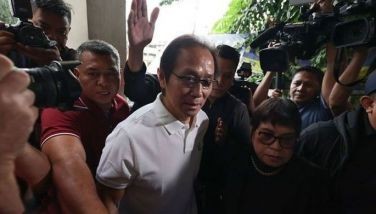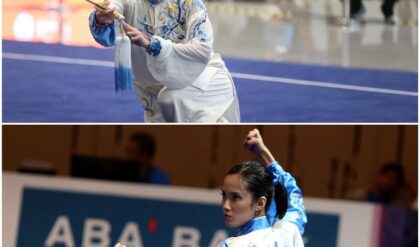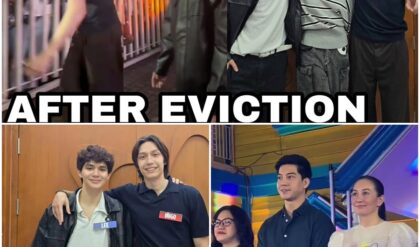Could there be a secret guardian within the judiciary shielding Charles “Atong” Ang? A powerful fixer—perhaps even a former judge—who allegedly influenced case outcomes and ensured impunity? That is the explosive allegation now rocking the Philippines’ justice system. According to Department of Justice (DOJ) Secretary Jesus Crispin “Boying” Remulla, a high-ranking judge, reportedly tied to Atong Ang, is currently being investigated by the Supreme Court for possible involvement in the disappearance of missing “sabungeros” (cockfighters). What does this mean for accountability—and for a justice system already under scrutiny?

🚨 The Accusation That Shocks the Nation
In a stunning revelation, Secretary Remulla disclosed that the Supreme Court is investigating a sitting or former judge closely linked to Atong Ang. This judge has allegedly been providing legal assistance and protection, covering up suspicious events—such as the mysterious disappearance of dozens of cockfighters connected to illegal sabong (cockfighting) operations. The judge, now serving at the Philippine Charity Sweepstakes Office (PCSO), is claimed to be a key operative who allegedly helps cherry-pick judges and prosecutors favorable to Atong Ang, even hosting private meetings abroad away from public scrutiny.
Remulla didn’t mince words: he has already raised the issue directly with Chief Justice Alexander Gesmundo. While details remain under wraps, the chief justice reportedly confirmed that an investigation is underway.
“It’s true—a judge is being probed,” Remulla said, stressing that the inquiry is still in its early stages but ongoing, without disclosing names or procedural details.
Why This Judge Matters—and Could Explain Decades of Legal Protection

To many, this “judge-handler” may be the missing puzzle piece explaining how Atong Ang repeatedly emerged unscathed from serious allegations. Tipster “Totoy” previously exposed how Atong allegedly had judges and prosecutors flown abroad to privately negotiate outcomes—far from public scrutiny. If even one judge of high rank is complicit, it suggests a deeper rot—a judicial system susceptible to manipulation at its core.
Netizens are already buzzing: “So that’s how he gets off scot-free? Bribes? Deals? Why else would courts consistently favor him?” The more powerful the figure, the greater the suspicion—and if true, this would mark one of the most audacious abuses of state power seen in recent memory.
DOJ and Supreme Court in Close Collaboration
Secretary Remulla emphasized that the DOJ is working closely with the Supreme Court via the Justice Sector Coordinating Council—a mechanism designed to foster cooperation between branches of government. While the details are confidential, the public can be assured the matter is being taken seriously.
Yet, Remulla cautioned: “Accusations do not equal convictions. Everyone remains innocent until proven guilty.” Still, once the investigation concludes, the court’s handling of the issue may either restore public trust—or deepen suspicions of institutional corruption.
Atong Ang’s Response: Denial and Waiting in the Wings
Atong Ang continues to deny any wrongdoing. His legal team insists he was never involved in the disappearance of cockfighters, and he remains at liberty with no formal charges filed. His lawyers argue that all previous allegations are speculative—and that he has a right to defend himself.
Still, ambiguity remains. How did the judge allegedly involved get placed in PCSO, and what were the private foreign meetings mentioned by Totoy? For now, there are too many unanswered questions.
Families of Missing Sabungeros Cry for Justice

Meanwhile, families of the missing sabungeros — many of whom disappeared in the chaos following the shutdown of e-sabong — remain in agony. Most of their loved ones vanished without a trace, leading to suspicion that influential figures may have intervened to suppress investigation, block evidence, or drag out legal processes.
If this judge’s involvement is confirmed, it may finally answer why so many cases remained unresolved—and why powerful individuals appear untouchable.
Public Outrage and Calls for Transparency
Public reaction has been immediate. Social media is awash with speculation and anger:
“They worry more about protecting a judge than protecting missing kababayans? SHAME!”
“This goes beyond one suspect—this is about the entire culture of accountability.”
Some are calling for the immediate release of any findings related to the Supreme Court’s probe, demanding transparency and decisive action if wrongdoing is confirmed.
What’s Next? The Road to Justice
The process unfolds in four phases:
Supreme Court Investigation
Conducted largely behind the scenes, involving confidential fact-finding among judicial colleagues.
DOJ Cooperation
DOJ may gather evidence from victims’ testimonies and whistleblowers, coordinating with NBI and DOST for forensic and digital probes.
Formal Charges?
Should the evidence implicate the judge or others, DOJ must decide whether to file criminal or administrative charges—a delicate matter, given judicial independence and potential backlash.
Public Disclosure and Accountability
Once all facts are verified, authorities must ensure transparency without compromising due process. Public trust demands nothing less.
The Bigger Picture: What This Means for the Justice System
If these allegations hold, this won’t be a mere scandal—it could be seismic. Exposing a judge who allegedly shields suspects from legal consequence would challenge the foundations of judicial integrity. It raises urgent questions:
Are other powerful figures similarly protected?
Does this represent institutional complicity, or limited incidents of corruption?
Will there be comprehensive reform—or will accountability stop at one judge?
Transparency is the only path forward. Citizens deserve to know whether officials manipulate justice—or whether political influence and brute power threaten the rule of law.
Final Word: A Stand-Your-Ground Moment for Justice
We stand at a pivotal crossroads. The Supreme Court’s investigation, backed by DOJ, could either reaffirm faith in justice—or signal something far darker. At stake are not only the missing sabungeros, but the integrity of the entire legal system.
Can this mystery unravel into truth? Will the missing finally get justice, and will those who shield them be held to account? What the public needs now is clarity—and action.
What do you think? Should the names and details be released? Are these isolated events, or a sign of systemic rot? Comment below and join the conversation.





